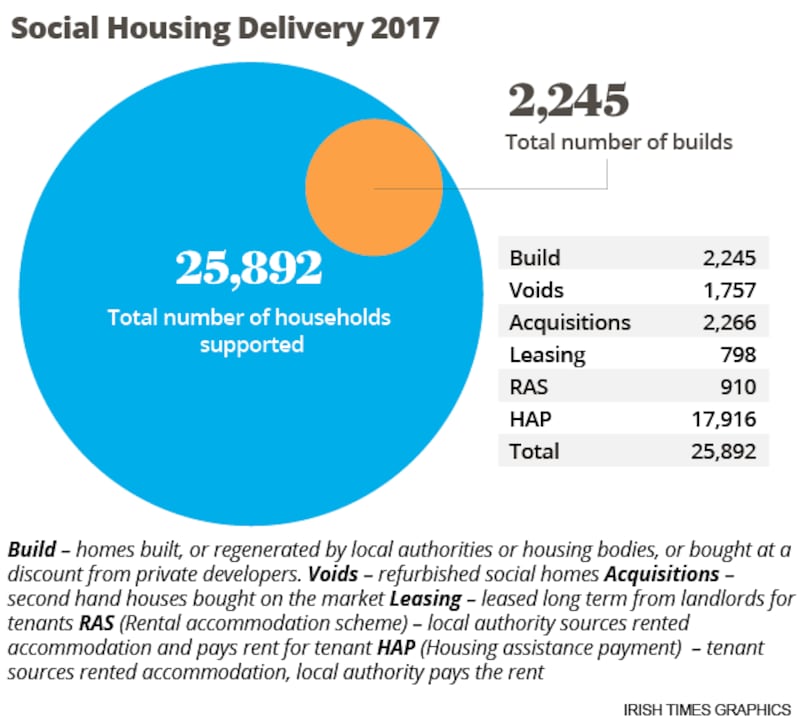Minister for Housing Eoghan Murphy has said he does not know how many homes were built across the State last year, and may not have accurate 2017 or 2016 housing figures until the middle of this year.
This is despite the fact that on Monday he published his department’s Housing Delivery 2017 report. While it details the amount of social and general housing provided last year, Mr Murphy said he was unable to supply figures for the number of private homes built because of an absence of reliable data.
The Department of Housing has been criticised for using ESB connections as a measure of the number of homes built each year. The ESB figures overstate the number of homes built because they include formerly vacant housing newly connected to the electricity grid.

Three months ago Mr Murphy said he had stopped using ESB data as a house-building measure when he took office last June and his department was working on a “better set of data” to provide accurate construction figures.
But on Monday the ESB figure for 2017 was published in the report. Mr Murphy outlined how more than 19,000 homes were connected to the grid, up almost 30 per cent on 2016, but when asked, he said he did not yet have accurate figures of the number of private homes built.
“I can’t give it right now, but we are doing work to get that figure.” He said the construction numbers needed to be “disentangled” from the ESB figures. He said work was ongoing in the department with the CSO and others “so we can come with a definitive build figure, I think in probably the second quarter of this year”.
Social homes
Mr Murphy said he could, however, “speak with confidence” in relation to the number of social homes provided in 2017, and said 25,892 households “had their housing needs met”.
The report indicated that almost 10 times as many social housing tenants were housed in private rented accommodation than in homes built by local authorities or housing charities last year.
Just 2,245 homes were built by local authorities and voluntary housing organisations last year, or bought from developers at a discount under their obligation to provide 10 per cent of an estate for social housing. The “build” figure also includes the regeneration of old local authority flats and houses.
In contrast 19,624 households became tenants of private landlords using State payments including the Housing Assistance Payment (HAP), the Rental Accommodation Scheme (RAS) and long-term lease arrangements.
Another 2,266 homes were bought on the private market, and 1,757 empty council homes were brought back into use.
Transfer of tenants
Housing charity Focus Ireland has questioned whether the HAP figures, which account for 17,916 of the rental homes, were “new” tenancies or represented the transfer of tenants from other rental schemes.
“Department of Housing figures from last year show that 2,528 (18.9 per cent) of the HAP tenancies created in the first nine months of 2017 were transfers of rent supplement to HAP. This suggests that nearly 20 per cent (3,386) of the 17,916 HAP units were made up of transfers and were not new homes.”
Sinn Féin Housing spokesman Eoin Ó Broin said the figures showed the Government’s “chronic over-reliance on the private sector”.
“Seventy-six per cent of the so-called social housing tenancies created in 2017 are actually private homes subsidised by the state through HAP, RAS and long-term leasing. The vast majority of these are short term and expensive HAP tenancies.”











